Introduction
In today’s competitive market, achieving brand recognition and fostering team unity can be challenging. However, custom branded apparel, particularly polo shirts, offers a powerful solution. These personalized garments not only boost brand visibility but also create a cohesive look that enhances employee presence and leaves a lasting impression on clients and customers.
Recent studies highlight that 61% of consumers are willing to spend more with companies that provide a customized experience, underscoring the importance of personalization in driving customer satisfaction and loyalty. By drawing inspiration from iconic brands like the United States Polo Association (USPA), which seamlessly blends heritage with modern design, businesses can leverage custom polos to connect emotionally with wearers. This trend towards functional fashion, where high-quality materials ensure comfort and style, makes custom polos a versatile and memorable branding tool.
Benefits of Custom Branded Apparel
Custom shirts transcend simple clothing choices to become powerful branding assets. By wearing customized shirts, companies can greatly enhance their visibility while promoting a cohesive team spirit. This cohesive look not only enhances employee presence at events but also leaves a lasting impression on clients and customers, making them feel valued and appreciated. In a competitive market, custom shirts serve as a versatile tool for businesses to distinguish themselves. According to recent studies, 61% of consumers are willing to spend more with companies that offer a customized experience, which underscores the importance of personalization in driving customer satisfaction and loyalty. The official apparel line of the United States Polo Association (USPA), for instance, effortlessly connects its celebrated history with a promising future, providing items that represent the legacy and sport of equestrian. This association not only enhances the identity of the label but also fosters an emotional bond with the wearers. In today's trend towards functional fashion, custom shirts made from high-quality materials offer comfort, style, and practicality, ensuring that the label remains visible and memorable whenever the item is worn.
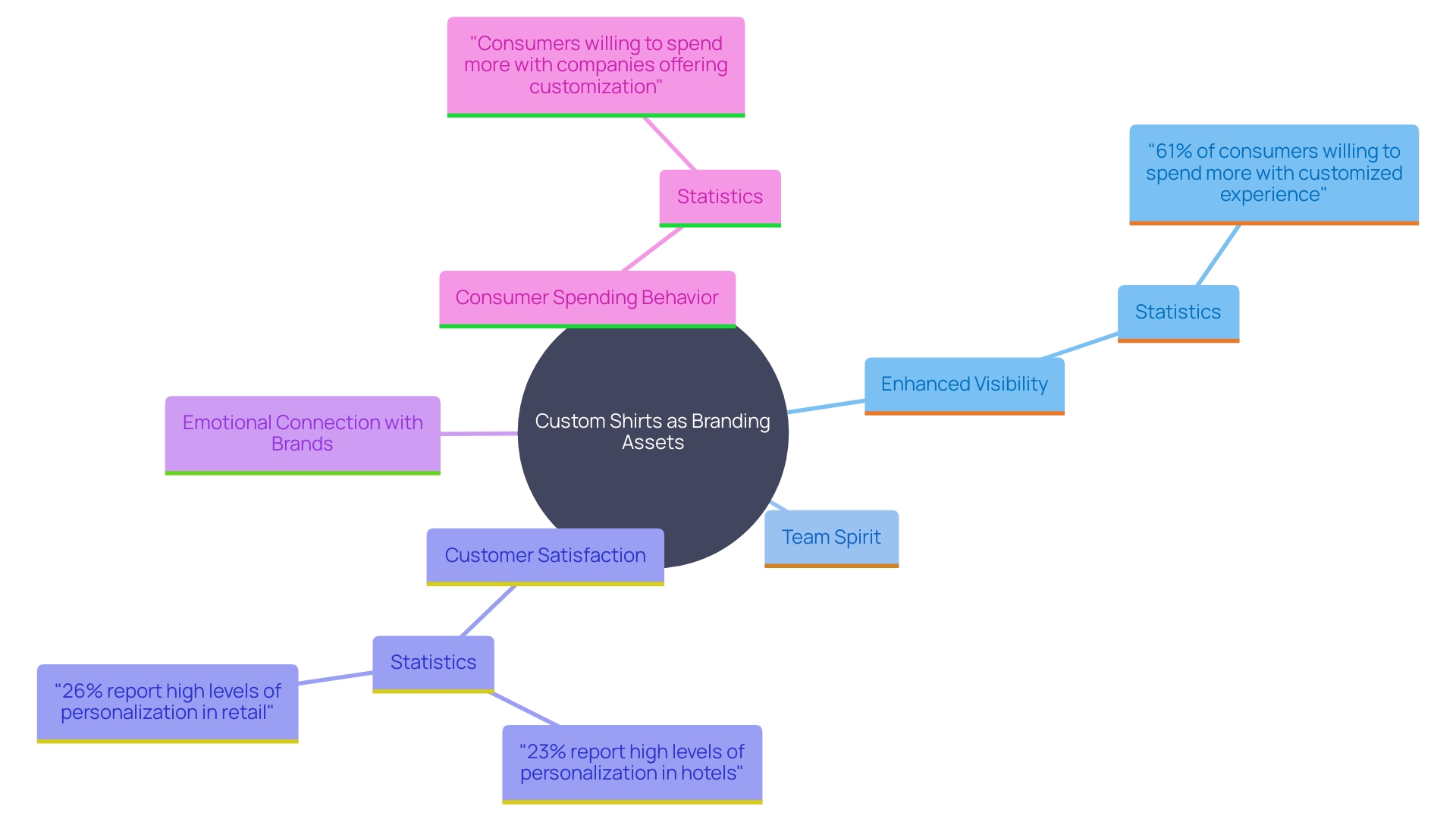
Designing Custom Polos
Designing the ideal tailored shirt requires a harmony of aesthetics and practicality that embodies your company's identity and tone. Take inspiration from U.S. Polo Assn., which seamlessly melds tradition with contemporary aesthetics to resonate with both long-time enthusiasts and new admirers. When you’re creating a personalized shirt, consider how contemporary artistic features and vibrant color selections can enhance your company’s reputation. For instance, the lively and modern visual identity of Forte Whey, which employs a striking typographic logo and a blend of neon, black, and beige, demonstrates how powerful aesthetics can distinguish a brand in a saturated market.
Consider the preferences of your target audience, who are increasingly prioritizing quality and timelessness over transient fashion trends. According to a survey by Blakely, 75% of UK shoppers aged 18-35 are more interested in comfort and durability than in following current trends. This aligns with the broader shift towards Athleisure and smart clothing, indicating that a well-designed garment should not only look good but also offer comfort and longevity.
Collaborations with influencers and athletes can also add significant value, as seen in the sports apparel industry’s growth, which is projected to reach $547.7 billion by 2028. By incorporating contemporary design features and emphasizing premium materials, your bespoke garment can transform into a statement item that distinguishes itself in any environment, from informal get-togethers to business occasions.
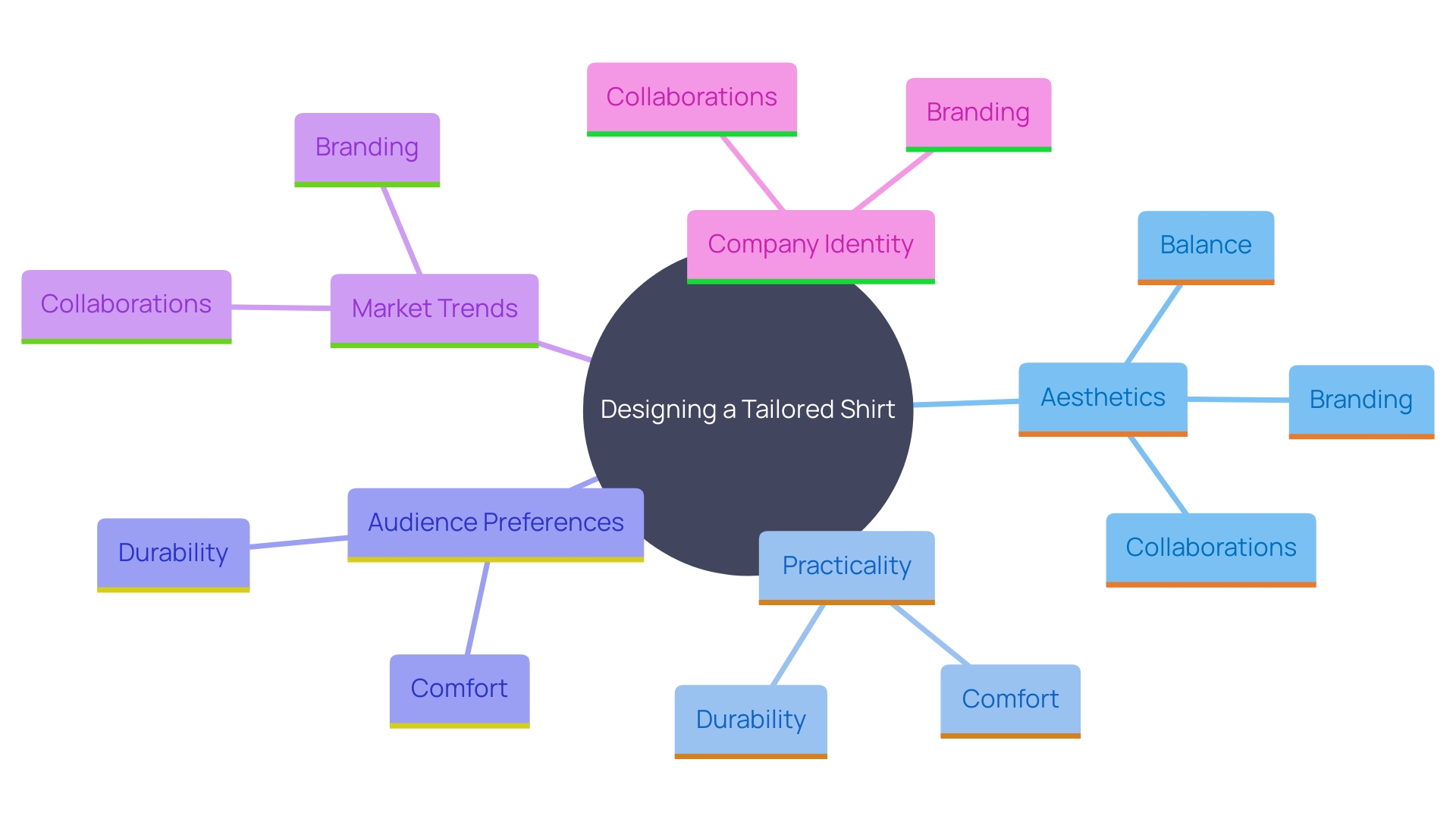
Step 1: Choose the Right Polo Shirt
Choosing the appropriate base garment is more than merely a style decision; it's about discovering a mix of comfort, quality, and fashion that reflects your personality. With U.S. Polo Assn., the official clothing brand of the United States Polo Association (USPA), you’re not just wearing a shirt, you’re donning a piece of history. This association with one of the oldest sports in the United States ensures a commitment to excellence and heritage.
When selecting your shirt, consider the fit—whether you prefer a relaxed or slim fit. The style is equally important; decide between short sleeve for a casual outing or long sleeve for a more polished look. Opt for a classic silhouette for timeless appeal or a modern cut for a contemporary edge. According to fashion stylist Kenzie Welch, investing in quality basics like a well-made polo can elevate your wardrobe with versatile pieces that transition seamlessly from casual to professional settings.
Moreover, consider the diverse body shapes and sizes across different regions. A label like U.S. Polo Assn. understands that a standardized sizing system may not suit everyone, which is why offering a range of sizes ensures that you find the perfect fit, enhancing comfort and satisfaction. This attention to detail reflects the company’s dedication to creating garments that not only look good but also feel great to wear.
Step 2: Customize Your Design
When designing custom polo shirts, it's essential to think beyond just colors and logos. Consider developing a visual identity that resonates deeply with your core values. For instance, the branding journey undertaken by Halo Lab for Virage.AI illustrates how a deliberate selection of colors can evoke emotions and tell a story. Each hue was chosen to capture the essence of adventure, freedom, and the thrill of the open road, effectively conveying the promise to its users.
Collaboration with skilled graphic designers can help bring such a vision to life. Daniel Medeiros's work on Forte Whey is a prime example of how careful aesthetic components can transform brand perception. The bold typographic logo and vibrant color palette not only symbolize strength and modernity but also make a bold statement in a crowded marketplace.
Utilizing digital creation technologies can further streamline the process, making it easier to adjust and personalize layouts rapidly. Platforms that enable digital fabric creation and 3D renderings can significantly shorten the time needed for the creation process, making it nearly 15%-20% quicker than conventional methods. This agility is invaluable in keeping up with evolving consumer preferences and market trends.
By focusing on the essence of your brand and utilizing advanced design tools, you can create a simple yet striking visual identity that stands out and makes a lasting impact.
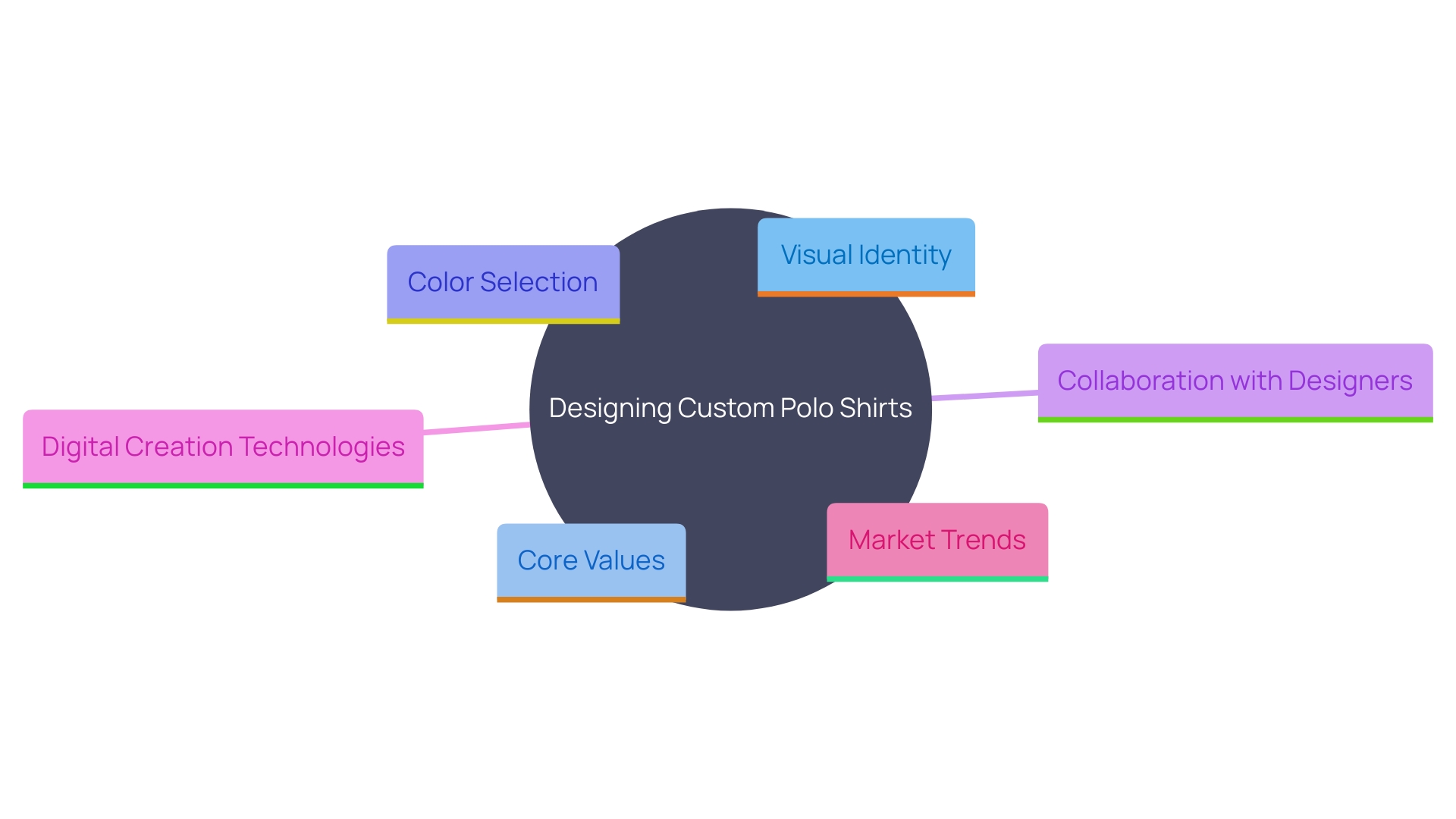
Step 3: Select the Perfect Fabric and Material
The material of your custom shirt can significantly influence both comfort and durability. For instance, cotton is renowned for its breathability and softness, making it ideal for everyday wear, especially in hot climates. It’s also hypoallergenic, perfect for those with sensitive skin. As one pleased client shared, 'The weight of the garment feels very comfortable and barely noticeable through daily activities.' Another favorite is polyester, which excels in moisture-wicking, making it a fantastic choice for active wear situations. Blended fabrics, combining elements like cotton and polyester, offer a balanced mix of comfort and functionality. As highlighted by a recent showcase at the Advanced Textiles Expo, innovative options like long-fiber cotton infused with mint fibers provide exceptional comfort and durability, keeping you cool in summer and warm in winter. When selecting the fabric for your custom shirt, consider the particular requirements of the event and the individual to guarantee optimal satisfaction and effectiveness.
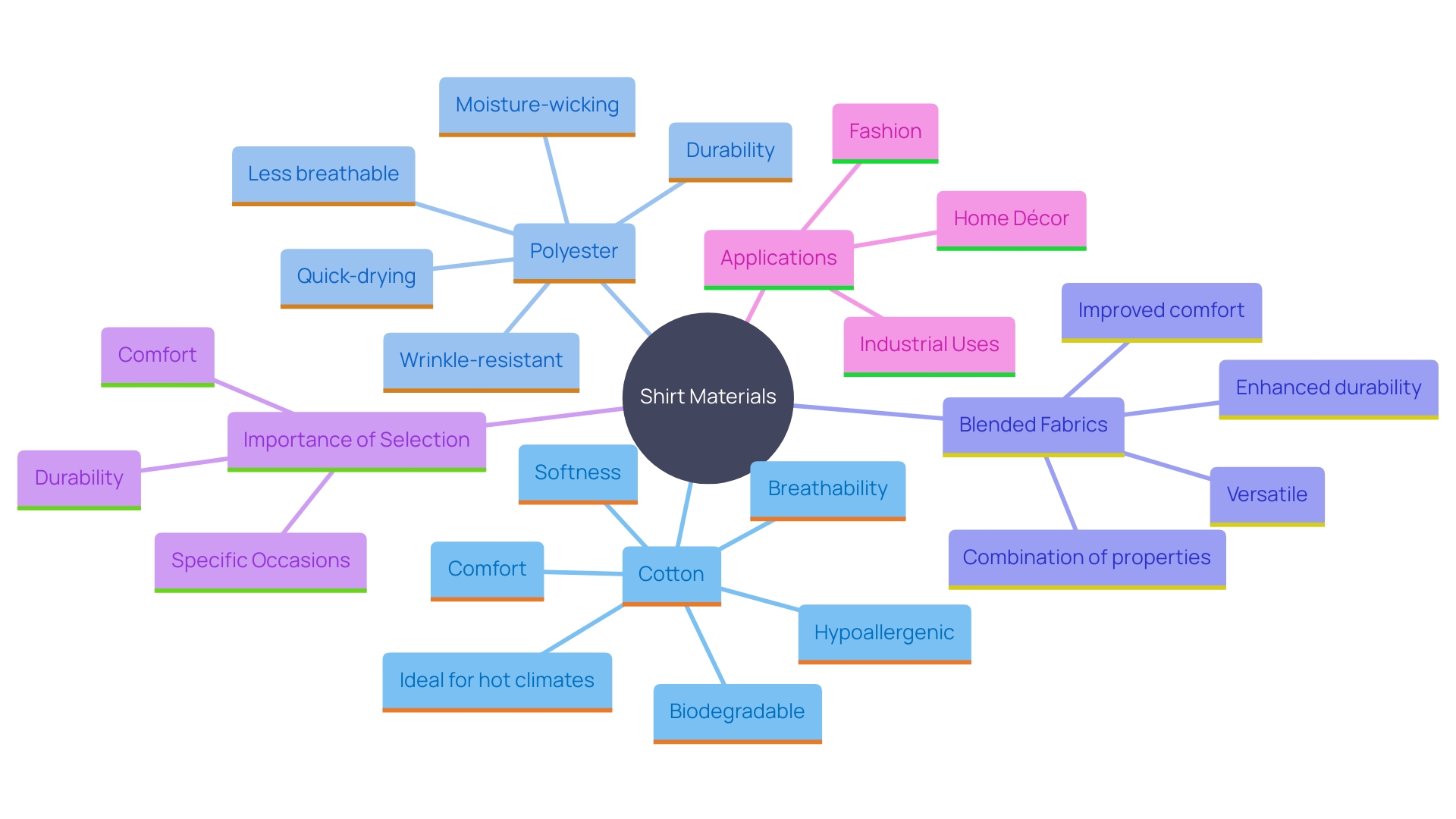
Step 4: Consider Printing Techniques
Selecting the right printing technique can make a significant difference in the outcome of your custom polo shirts. Whether you choose screen printing, embroidery, or heat transfer, each method has unique advantages tailored to different needs.
Screen Printing: Known for its durability and vibrant colors, screen printing is ideal for intricate and detailed patterns. It offers versatility, accommodating various materials such as fabric, paper, and even metal. This method is praised for its cost-effectiveness, particularly for large-scale runs, and its capacity to produce high-quality prints with crisp, vibrant hues. As noted in the fine art world, renowned artists often opt for screen printing to create limited edition prints due to its unique aesthetic quality and enduring nature.
Embroidery: For a classy and professional look, embroidery is the go-to choice. This technique involves stitching patterns directly onto the fabric, ensuring longevity and a premium appearance. It's especially appropriate for logos and text-focused creations where durability is a priority. Companies that invest in high-quality embroidery equipment, staff, and processes can run their textile presses around the clock, ensuring a consistent output of top-notch products.
Heat Transfer: This method is perfect for complex, multi-colored patterns. Heat transfer entails printing your pattern onto a special paper and then using heat to transfer it onto the fabric. It's a versatile and cost-effective option for smaller quantities or one-off customizations. The textile market's expansion and the growing need for innovative and customized solutions make heat transfer a popular choice among businesses looking to offer personalized products without maintaining large inventories.
Each printing method offers unique aspects, so it's crucial to consider your project's complexity, the intended durability, and your budget prior to making a choice. Whether you're aiming for vibrant, detailed prints or a sleek, professional finish, understanding these methods will help you make an informed choice for your custom polo shirts.
Step 5: Place Your Order
After finalizing your design, fabric, and printing method, placing your order is the next crucial step. Opt for a reputable supplier specializing in custom apparel to ensure top-notch quality and timely delivery. Needed, for example, provides more than 60 labels with no minimum order necessary, ensuring safe transactions and fast delivery within 2-5 business days. Always review any proofs or samples before finalizing your order. This practice helps avoid unexpected surprises and ensures the final product meets your expectations. As highlighted by industry experts, evaluating product quality, price, delivery times, and minimum order quantities is essential when selecting a supplier. Trade shows, like those attended by leading retailers such as Chico's and Ashley's Furniture, provide excellent opportunities to find and network with key suppliers, evaluate product quality firsthand, and make informed decisions to enhance your brand's offerings.
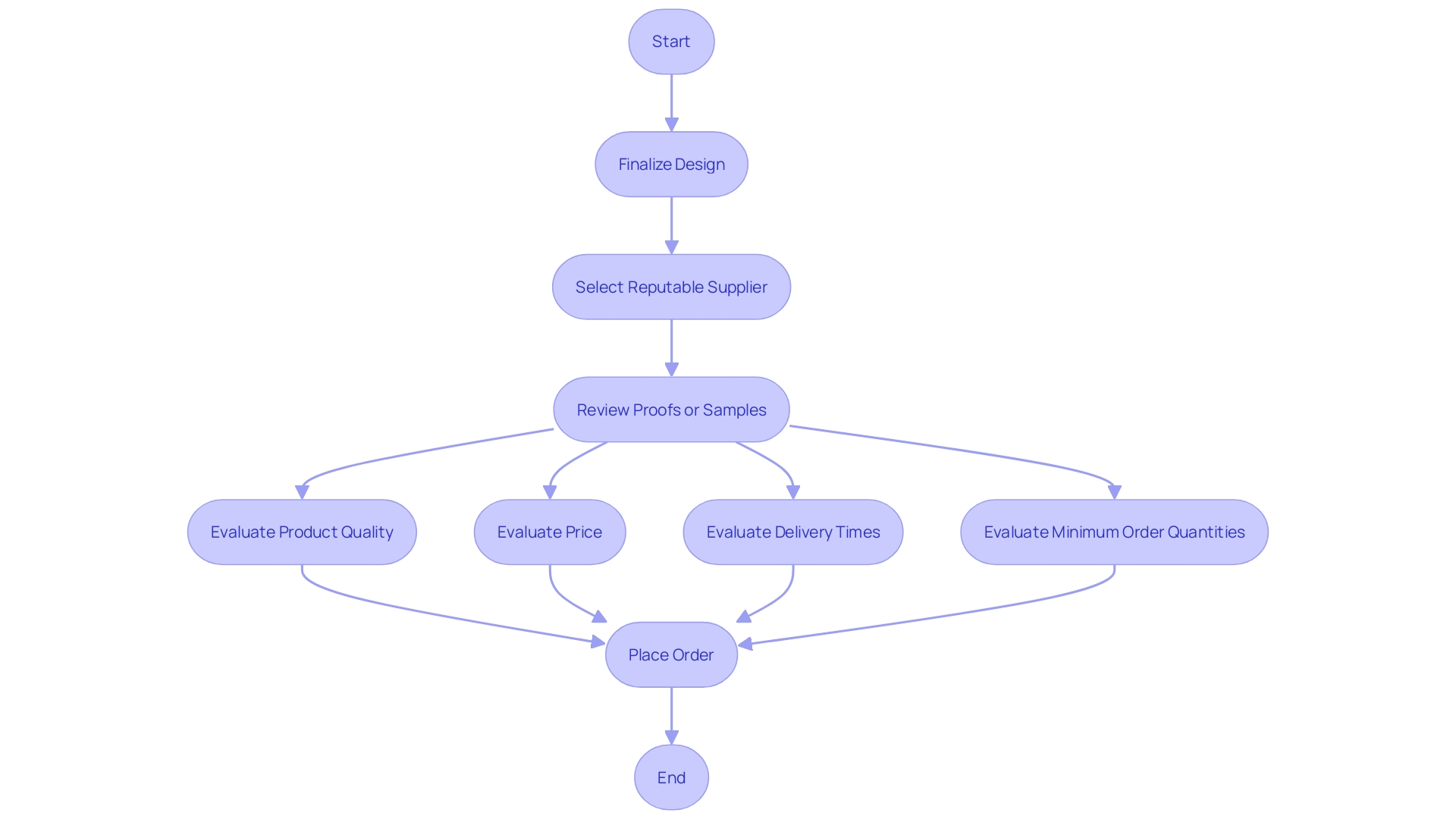
Tips for Styling and Wearing Custom Polos
Custom shirts provide limitless styling options, making them a wardrobe necessity for any event. For a smart-casual appearance, combine your shirt with chinos and loafers, effortlessly bridging the gap between laid-back and polished. When aiming for a relaxed vibe, team your shirt with well-fitted shorts and sneakers. Elevate your outfit for formal events by layering a tailored blazer over your shirt, instantly adding a touch of sophistication. Accessories like leather belts and classic watches can further enhance your ensemble, ensuring you stand out with a polished appearance. As the official apparel brand of the United States Polo Association (USPA), each custom item embodies a rich heritage, linking the sport's illustrious past to a bright future, and providing you with a piece of timeless elegance.
Best Practices for Custom Embroidered Polos
To achieve standout embroidery on your custom polo garments, start by ensuring your logo is clear and appropriately sized for the item. Choose contrasting thread colors to improve visibility, making your design stand out against the fabric. Popular placement options include the left chest and sleeves, providing a professional and balanced look. Regularly check the embroidery quality to maintain a polished appearance. Utilizing high-quality equipment, like Tajima 12-Head machines, and skilled hand-finishing can significantly elevate your brand's image. Remember, the versatility of embroidery allows you to customize a wide range of items beyond apparel, from towels to hats, making it an excellent choice for diverse branding needs.
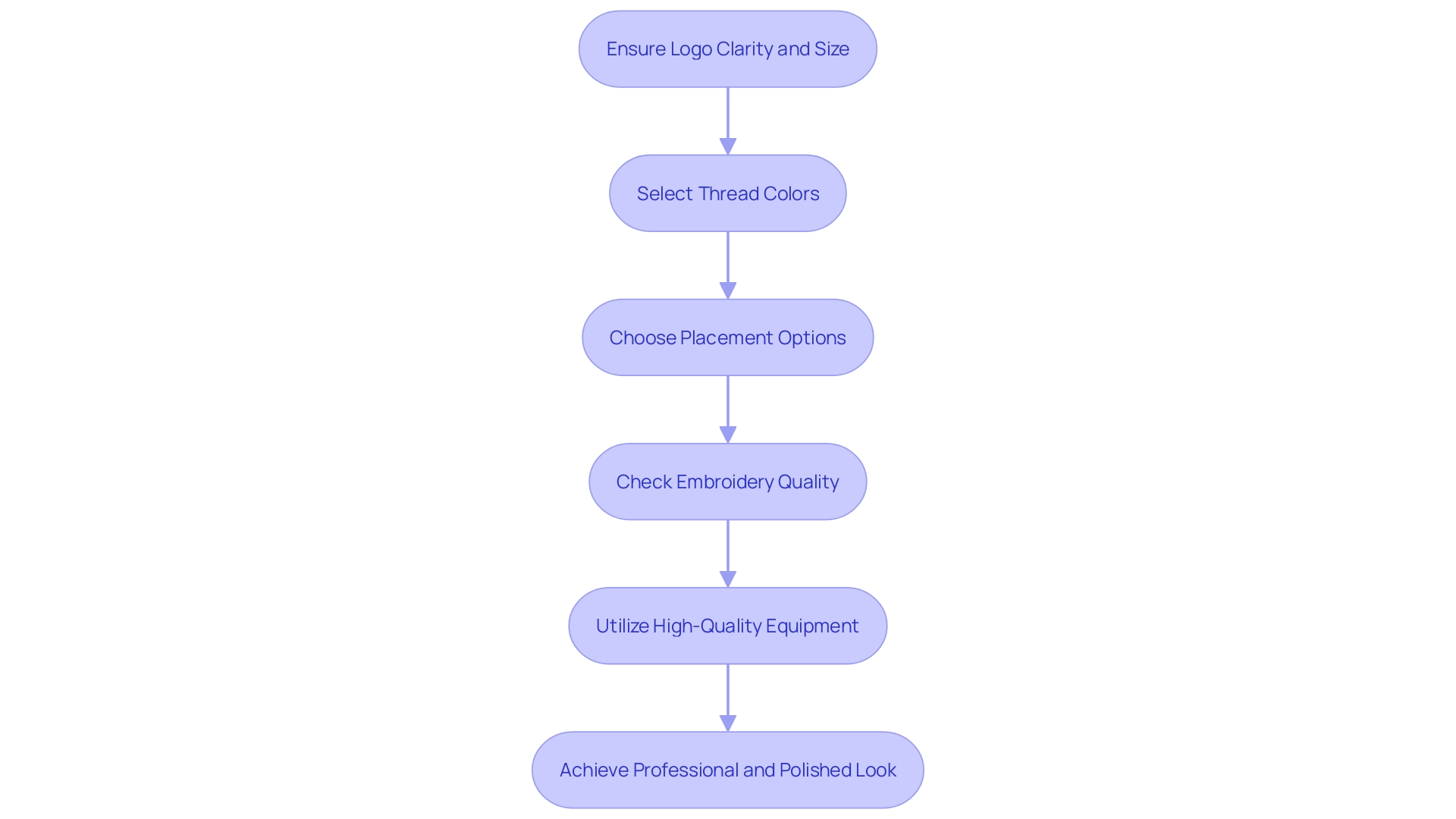
Choosing the Right Fit and Style
Fit is crucial for both comfort and style. Providing various styles, including slim, regular, and relaxed, guarantees that each person can discover a top that matches their body type ideally. This approach is not just about aesthetics; it’s about boosting confidence and comfort. As Jeremy White pointed out, a well-fitted shirt, especially one designed to be forgiving yet stylish, can make a world of difference. The United States Polo Association (USPA), an entity that embodies the rich heritage of polo, exemplifies this by offering apparel that caters to various body types while maintaining an air of sophistication. USPA's commitment to quality and fit ensures that whether you're on the field or at a casual gathering, you feel confident and comfortable. In fact, customer feedback often highlights how a perfect fit can enhance one's overall experience, making them feel great while proudly representing the label. This sentiment is echoed by satisfied customers who appreciate the soft, durable materials that withstand frequent wear and washing without losing their shape or color. By focusing on fit, brands not only meet the diverse needs of their customers but also foster a sense of belonging and pride among their wearers.
Key Factors to Consider When Buying a Polo Shirt
When buying personalized garments, several important elements should be taken into account to guarantee a valuable investment. Price is often a primary concern, but don't overlook the value of bulk order discounts, which can significantly reduce costs for larger quantities. Furthermore, shipping times are worth noting, as delays can impact your planning and distribution.
To gauge the reliability of your supplier, always check reviews and testimonials. Positive feedback from previous customers not only builds trust but also highlights the supplier's commitment to quality. As one satisfied customer noted, “If you are happy with your purchase, please consider posting a positive review for us. This helps us to continue providing great products and helps potential buyers to make confident decisions.”
Additionally, consider the longevity of the polo shirts. Opt for materials known for their durability, such as polyester, which is praised for its resistance to wear and tear. According to industry statistics, synthetic fabrics like polyester are favored for their enhanced performance and durability, making them ideal for both casual and professional settings.
A compelling case study from WindsorOne showcases the importance of innovative marketing strategies in maximizing the value of custom apparel. Faced with a limited budget, they used branded shirts to build customer relationships, which not only increased brand loyalty but also boosted their product awareness.
Lastly, keep an eye on the latest market trends. As Michael Gunther from Consumer Edge pointed out, economic conditions can influence spending habits, impacting the demand for various apparel types. Staying informed about these trends can help you make more strategic decisions when purchasing custom polos.
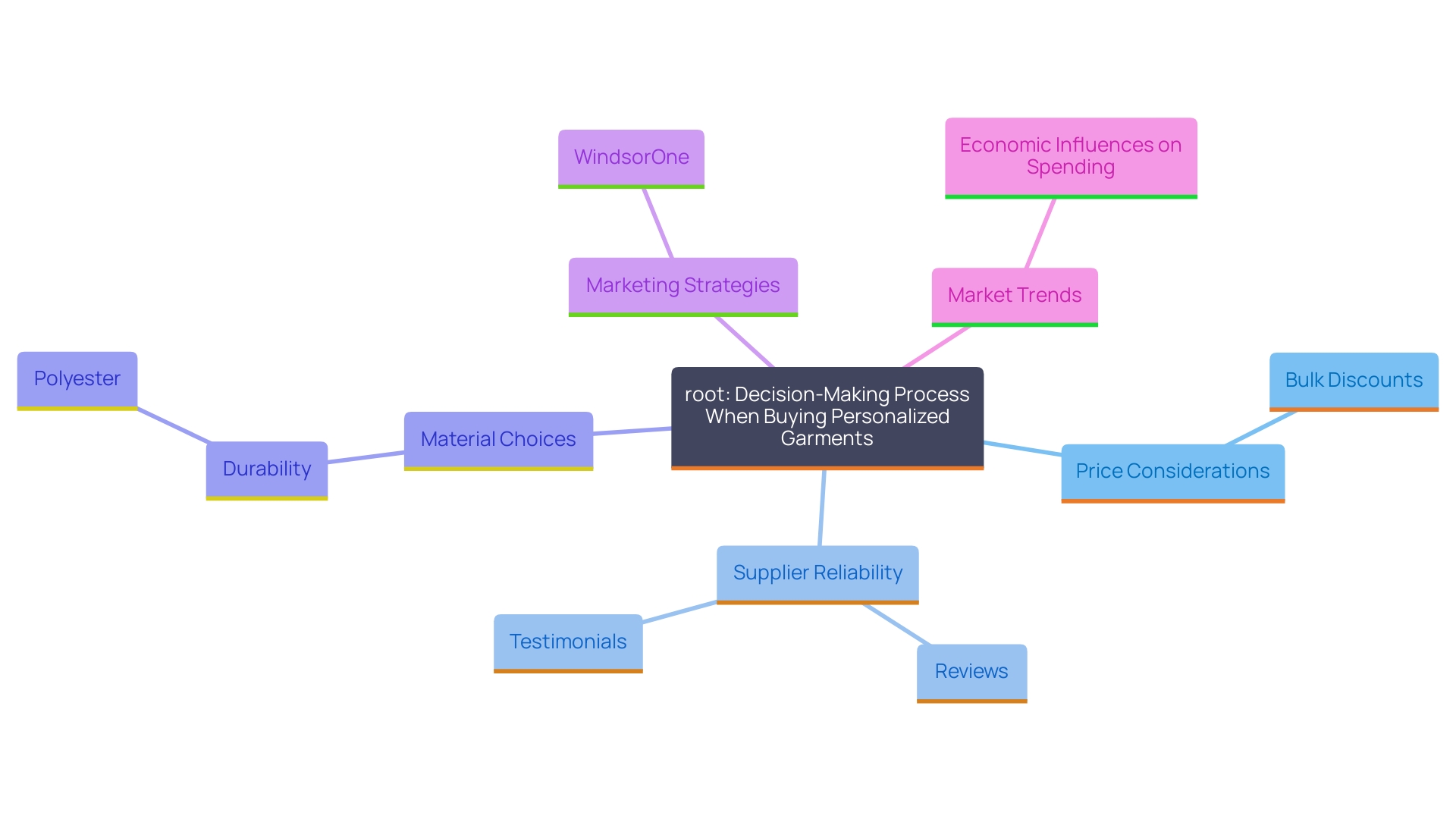
Conclusion
Custom branded apparel, particularly polo shirts, emerges as an invaluable asset for companies aiming to enhance brand visibility and promote team unity. By investing in personalized polos, businesses not only create a cohesive appearance among employees but also leave a memorable impression on clients. The substantial willingness of consumers to engage with brands that offer customized experiences emphasizes the critical role personalization plays in fostering customer loyalty.
The journey of designing custom polos is multifaceted, involving thoughtful considerations of style, fabric, and printing techniques. By drawing inspiration from successful brands and understanding the preferences of target audiences, companies can create garments that resonate deeply with their customers. The careful selection of high-quality materials further enhances both comfort and durability, ensuring that custom polos remain functional and stylish across various settings.
Ultimately, the process of creating and wearing custom polos is not just about clothing; it’s about building a brand identity that connects emotionally with wearers. By focusing on fit, design, and quality, businesses can cultivate a sense of belonging and pride among employees and customers alike. In a competitive market, custom branded apparel stands out as a strategic tool for companies looking to make a lasting impact.




